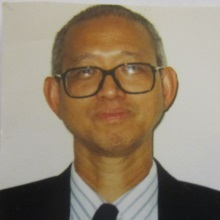Science and Technology of Wastewater and Sludge Treatment
A special issue of Water (ISSN 2073-4441). This special issue belongs to the section "Wastewater Treatment and Reuse".
Deadline for manuscript submissions: closed (31 March 2011) | Viewed by 143922
Special Issue Editor
Interests: water supply and water treatment; municipal wastewater treatment; industrial waste treatment; biological waste treatment; water and wastewater treatment plant design; water pollution control; water quality engineering
Special Issues, Collections and Topics in MDPI journals
Special Issue Information
Dear Colleagues,
Wastewater comprises liquid waste discharged by domestic residences, commercial properties, industry, and/or agriculture and can encompass a wide range of potential contaminants and concentrations. Sludge refers to the residual, semi-solid material left from drinking water treatment, industrial wastewater, or sewage treatment processes. Pollutants generated from wastewater and sludge may cause adverse effect on the environment. If not dealt properly they can cause pollution to surface and ground waters, create health problems and effect the environment. Therefore, we would like to call for papers to disseminate and share findings on wastewater and sludge related research in addressing the problem scientifically.
Papers are selected by a rigorous peer review procedure with the aim of rapid and wide dissemination of research results, development and application.
Original research paper or reviews are invited in the following and related areas:
- Characterization and treatment processes for wastewater, biosolids and sludge
- Wastewater ,biosolids, and sludge management including their quality, planning, standards, regulations, policy, monitoring and the analysis
- Water pollution control
- The application of mathematical and modeling techniques in wastewater, biosolids, and sludge related research
- Economic and social aspects of wastewater, biosolids, and sludge management
- Case study on wastewater, biosolids, and sludge treatment
- Wastewater reuse and sludge processing/recycling technology
- Risk assessment and management related to wastewater, biosolids, and sludge
- Ultimate disposal of biosolids and sludge
- Waste minimization and life cycle assessment
- Industrial waste treatment
- Hazardous waste treatment
- Radioactive waste pollution and treatment
- Other related research
Prof. Dr. Yung-Tse Hung
Prof. Dr. Hamidi Abdul Aziz
Prof. Dr. Khim Chu
Dr. Hana Salman
Dr. Puangrat Kajitvichyanukul
Guest Editors
Keywords
- wastewater and waste treatment
- sludge treatment and disposal
- niosolids treatment
- wastewater and waste management
- wastewater reuse
- sludge management
- industrial waste treatment
- hazardous waste treatment
- radioactive waste treatment
- water pollution control





